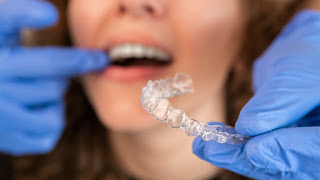Understanding Bone Spurs: Causes, Symptoms, and Treatment Options
A bone spicule is a small, pointed projection of bone that can be found in various parts of the body. It is often associated with conditions such as osteoarthritis and osteoporosis, where the bone tissue is weakened or damaged. Bone spicules can occur in different shapes and sizes, ranging from tiny fragments to larger protrusions. They can be seen on X-rays or other imaging tests as small, sharp spikes or irregular shapes.
In some cases, bone spicules can cause pain, inflammation, and other
symptoms. Treatment options may include medications to relieve pain and
inflammation, physical therapy to improve mobility and strength, or surgery to
remove the spicules if necessary.
Overall, bone spicules are a common finding in many bone-related
conditions and can be managed effectively with proper diagnosis and treatment.
Bone spur
A bone
spur in the gum is a small, bony growth that can occur on the
jawbone or the roof of the mouth. It is also known as a torus or exostosis.
Bone spurs in the gum are usually harmless and do not cause any
symptoms. However, they can sometimes interfere with dental procedures or cause
irritation to the soft tissues of the mouth. In some cases, a bone spur in the
gum may be removed surgically if it is causing problems. However, this is
usually only necessary if the spur is large or causing significant discomfort.
Prevention of bone spurs in the gum involves maintaining good oral
hygiene and avoiding habits such as smoking or chewing tobacco, which can
increase the risk of bad
oral health. Regular dental check-ups can also help to detect and treat any
dental
problems before they become more serious.
Summary paragraph about both of them:
A bone spur in the gum is a small bony growth that can occur on the
jawbone or roof of the mouth. It is also known as a torus or exostosis and is
usually harmless, but can sometimes cause irritation or interfere with dental
procedures. A bone spicule, on the other hand, is a small piece of bone that
can become dislodged during tooth extraction or other dental procedures. It can
cause pain and discomfort and may need to be removed surgically. Good oral
hygiene and regular dental check-ups can help prevent both bone spurs and bone
spicules from occurring.

Comments
Post a Comment